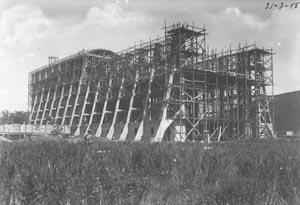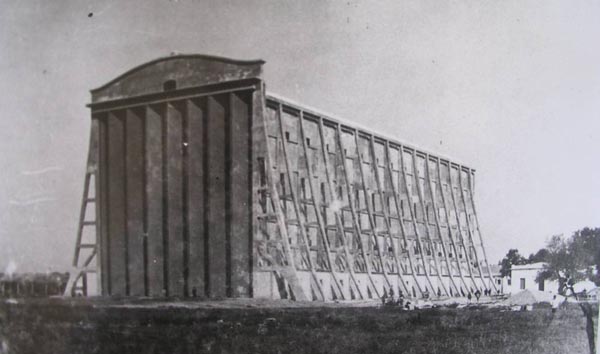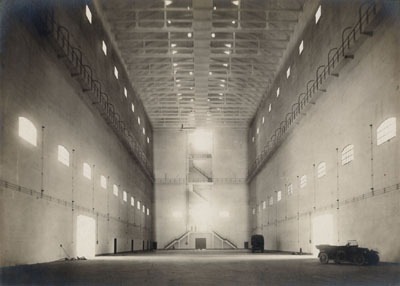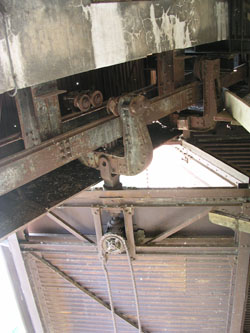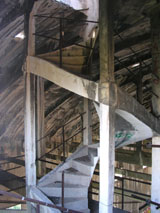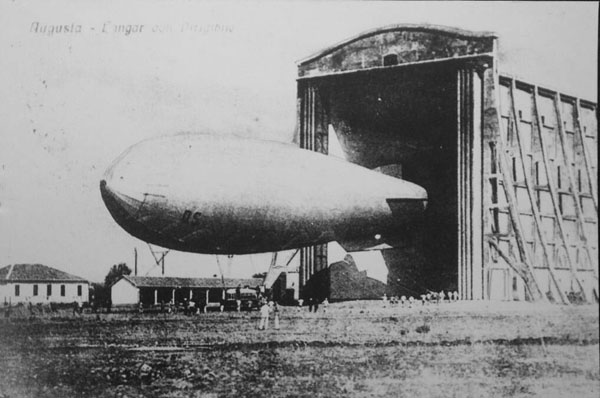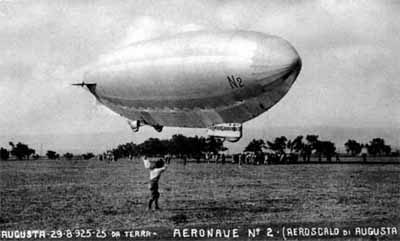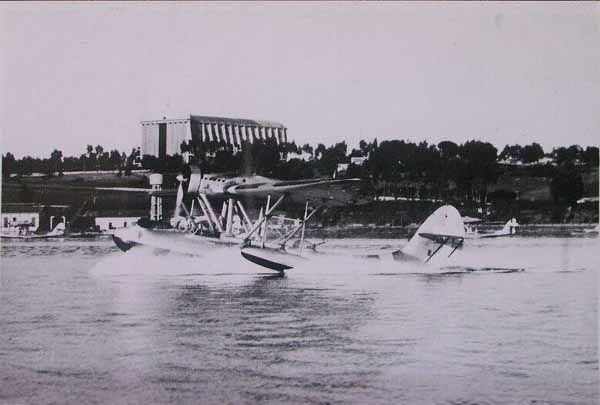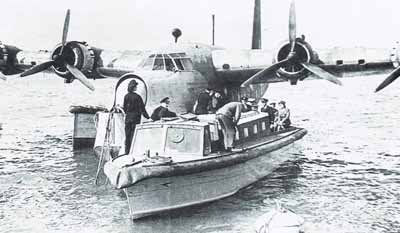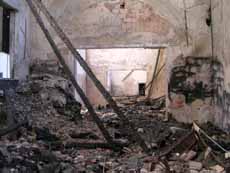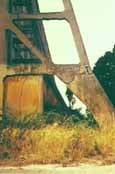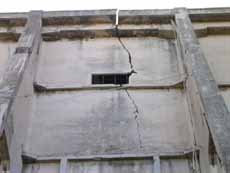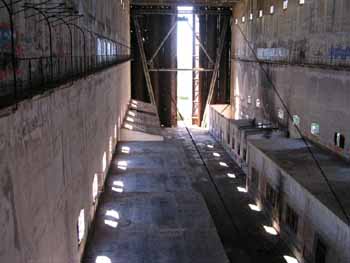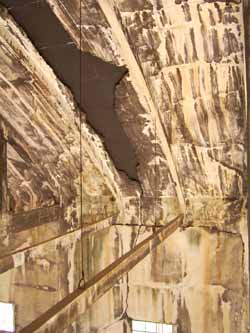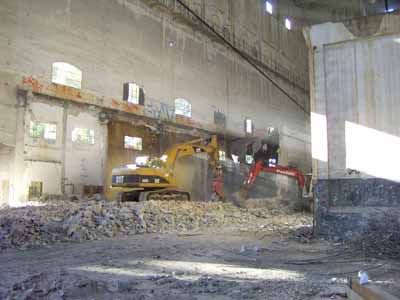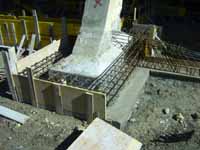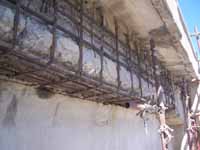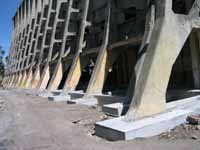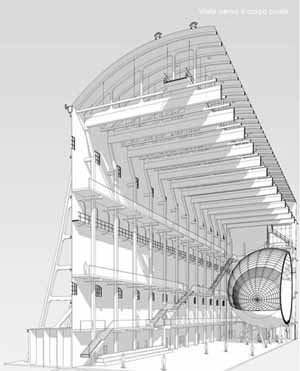
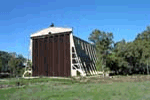
Progetti | l'Attività | Video | Ricerche e Studi | Rassegna stampa | Amici | Visitatori | Storia | Contatti
The Airship Hangar of Augusta
cerca con |
Richiedi il DVD o i libri
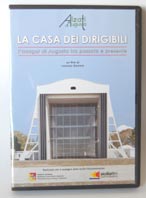
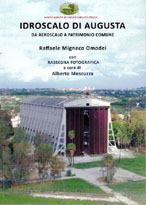
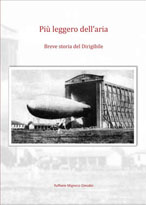

Sfoglia il libro


Augusta com'era
Augusta Framacamo

THE AIRSHIP HANGAR OF AUGUSTA
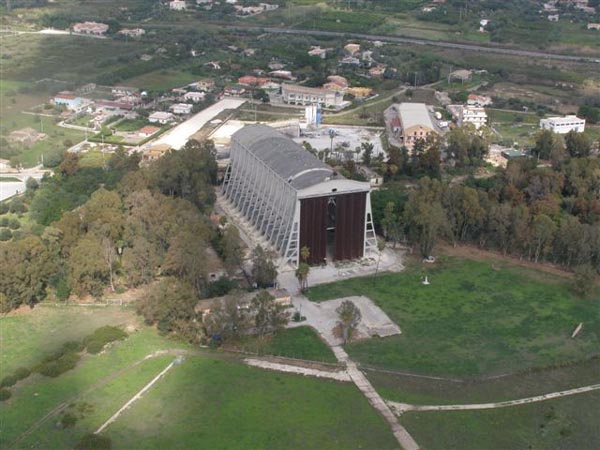
The airship hangar is an imposing reinforced concrete building overlooking the harbour of Augusta in Sicily. Built in 1917 it was declared by the Department of Cultural Heritage, in 1987, as highly historical and monumental "for the exceptional design features which distinguish it; a precious example of architectural and a valid testimony of the state of art regarding reinforced concrete buildings of the early century".
Its architectural lines make it look like a modern cathedral. It is an original example of the heritage of coastal industrial archeology that is very common in the Mediterranean sea.
The voluntary Association HANGAR TEAM has been working on its recovery and enhancement since 2002.
THE HISTORY
The Hangar in Augusta was planned during World War I as part of an overall strategic plan to enhance military defensive posts along the coastline. Commissioned by the Admiralty Board, it served as a response to counteract the action of German submarines that threatened the Italian coast.
To effectively counteract the attacks, the Italian Navy turned its attention to the use of seaplanes and airships, the latter in particular for its flight characteristics, and because deemed to be more suitable than seaplanes to prevent submarine attacks.
The construction of the airship started in 1917 and was designed b yAntonio Garboli, a pioneer in the use of reinforced concrete in buildings.DESCRIPTION OF THE MONUMENT
The entire building measures 105.5 m in length, 45.2 m in width and 37 m in height, the interior area measuring 100 m by 2 6m by 31m. The imposing structure stands out in the landscape with the front entrance facing a large open space (measuring 500 m by 400 m) designated for airship maneuvers.
The hangar is based on a structure characterized by a succession of frames in reinforced concrete supported by a succession of wide and slender wing-shaped external buttresses.
The pillars of the supporting structure are external creating an interior space which is totally free to maneuver the airship.
The fifteen horizontal trusses are mounted on vertical pillars and surmounted by a wide barrel-vault.
The external walls, made of concrete, are thin and not structurally connected to the columns.
This option would allow the construction to keep its structure intact in the event of an explosion of the airship which was then filled with hydrogen gas and highly explosive.
The front elevation, facing a south-easterly direction, is characterized by a high beam in the shape of a wave, typical of the early 1900's classical idea of a gable.
An enormous access door, equipped with an automatic opening and closing system operated by electric motors hangs from this beam.
The motors drove a huge folding device comprising fourteen steel elements covered with 31 meters high metal paneling.
A pantographic system of rods regulated the movement.
The central walkway ends with a spiral staircase leading to the rooftop of the hangar. From there one can have access to a metal structure, “the lantern”, designed to hold an optical device used for communication with aircrafts.
ACTIVITY
The delayed completion of the Hangar in 1920 prevented it from being used by airships engaged in combat missions during World War I, and was subsequently used only for training and reconnaissance missions.
The OS (5,000 cubic meters) was the first airship to be housed in the Hangar.
The N2 (7.100 cubic meters) was the second airship to be housed in the Hangar. The N2, designed by the Air Force engineer Umberto Nobile, was characterized by its semi-rigid structure.
It was an airship of the same type as the most famous N1, the Norge, with which Nobile made his flight across the polar ice from Europe to America (Alaska) in 1926.
In 1925, the airship terminal passes to disarmament and in 1926 it is transformed into a seaplane base, and from then on the airships as a means of aerial reconnaissance pass the baton to the seaplanes. As a result the Hangar remains an austere testimony of the aviation pioneer period.
In this transformation the hangar for airships undergoes some changes internally. Inside the Hangar, along the side walls and along the entire length of the building, premises such as dormitories, warehouses, offices and recreation rooms were built.
During the Second World War, starting from the summer of '43, the whole seaplane area was used by the 8th British occupation troops and became quarters for the Royal Air Force (RAF) until July1946.
At the end of the conflict the area was taken over by the British Overseas Airways Corporation (BOAC), that made Augusta a stop on the routes to the Far East until November 1950.
From 1946 to1958, the Hangar hosted the Air Force military personnel who performed emergency service with seaplanes. The year 1958 marked the end of seaplane activities in Augusta.
DECAY
Thus begins the decay of the whole monument. Although in 1987 the airship hangar had been declared a monument of high historical and architectural interest, the whole building is almost abandoned and left to its inexorable process of decay.
In addition to bad weather, invasive vegetation and vandalism, the front of the building has been seriously damaged by a structural failure in the foundations.
In 1988, an attempt to contain the damage is made. A steel frame connected to the majestic portal is built.
The frame is anchored, with two groups of cables, to a reinforced concrete plinth placed on the back of the building. The glaring gap that perpendicularly crosses the roof of the Hangar is covered with metal plates.
This frame, which is still existent, has allowed the building to withstand the seismic shocks of the earthquake in 1990.
THE HANGAR TEAM ASSOCIATION IS FOUNDED
In January 2002 the Association HANGAR TEAM AUGUSTA is founded in order to protect the hangar, the minor buildings and to promote initiatives to speed up the recovery process.
The Association's action proves effective immediately:
- The municipality of Augusta is urged to ask for the concession area which belongs to the Air Force and on which the monumental complex stands. This is obtained in 2004.
- An agreement with the City of Augusta, which offers free collaboration for the protection of the park is reached.
- Funds that the Civil Protection had intended for the areas affected by the earthquake in 1990 are obtained.
In 2006, a project to rescue and restore the Hangar is funded.
THE PROJECT TO CONSOLIDATE THE STATIC STATE OF THE BUILDING
This project included:
- the final demolition of the internal buildings restoring the original area;
- the enlargement of the pillar plinthsand their attachments except for those that support the access door;
- the repairing of the worse damaged side panels and pillars .
The work was completed in 2009.
The limited funding could not cover all the necessary work on the access door and on the roof of the monument.
Therefore, this restoration project was not sufficient to restore the building to a public utility.
THERECOVERY PROJECT
Another restoration project which is being carried out by the City of Augusta, provides a seismic retrofitting of the building working toward sits destination to public utility.
The project funded by the Company ARCUS, aims at supporting important projects in the field of cultural heritage. ARCUS helps in the completion of the project, contributing to the financing, monitoring progress; the goal being a positive conclusion of initiatives.
The project involves the transformation of the Hangar into an area for events, with the construction of walkways and lifts for the use of all the area inside and the enjoyment of panoramic views. In addition, the outer buildings of the monumental complex are destined to become study centers for associations and foundations, facilities for sports, accommodation and catering.
In September 2010 the preliminary phase of this restoration project was approved.
The voluntary association Hangar Team conducts studies and researches on the monument and has worked with the City of Augusta free of charge seeing to the protection, cleaning and supervision of the park, using their own funds, contributions from the public, private sponsors and, occasionally, Public Bodies.
It is also occupied of the reception of visitors, organizing guided tours of the monument, the meetings with students, the events and any promotional activity for the development of this valuable historical and cultural heritage.
